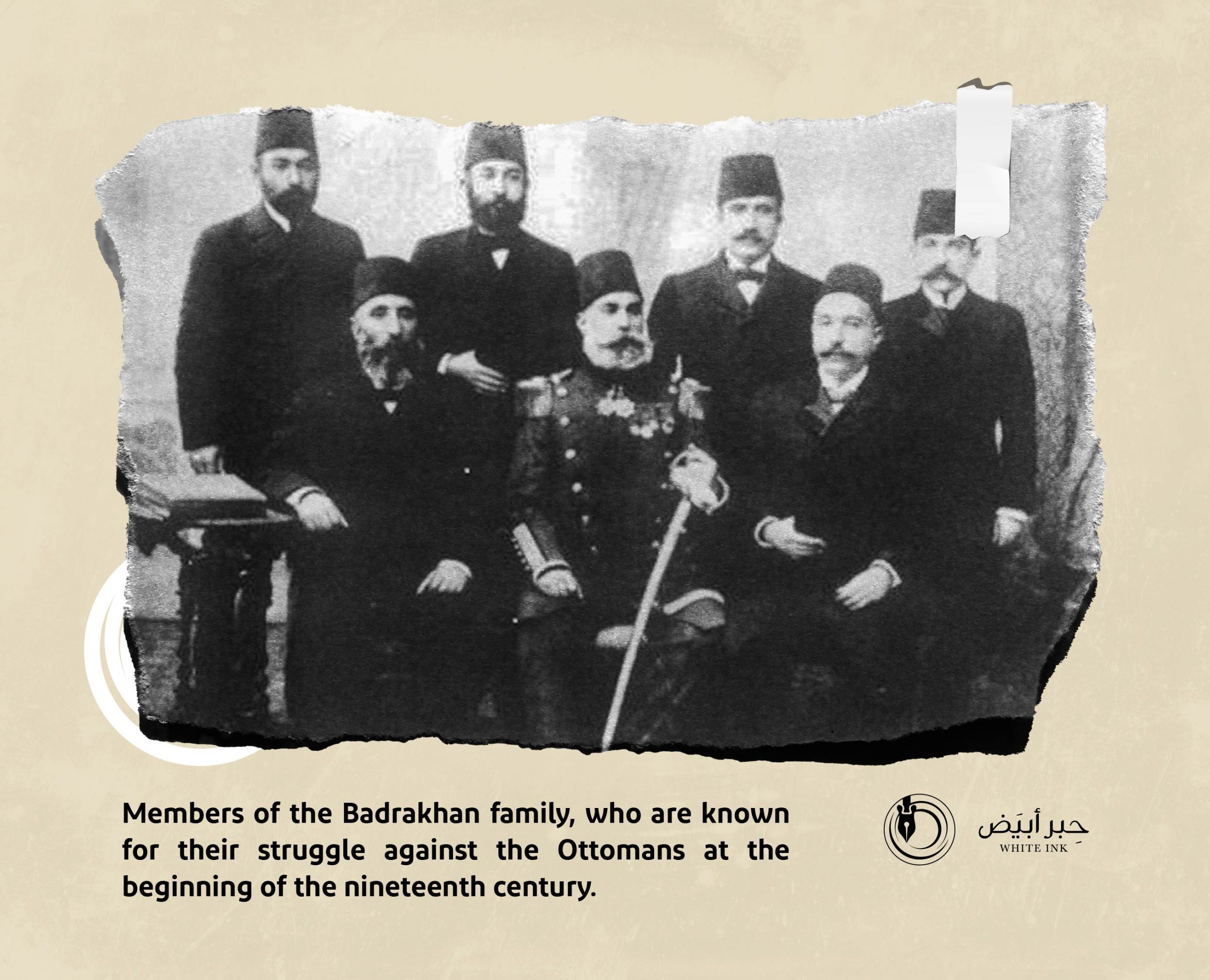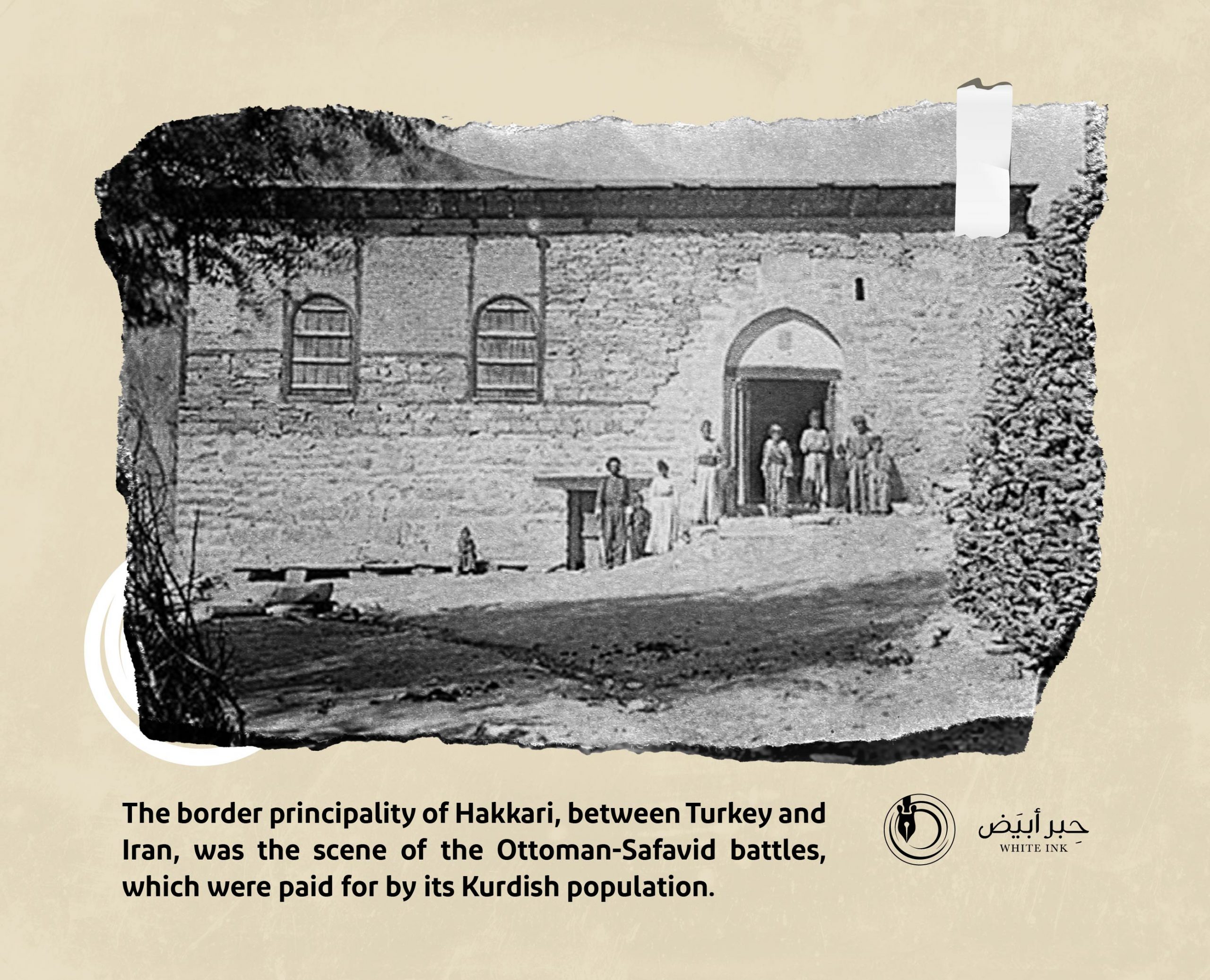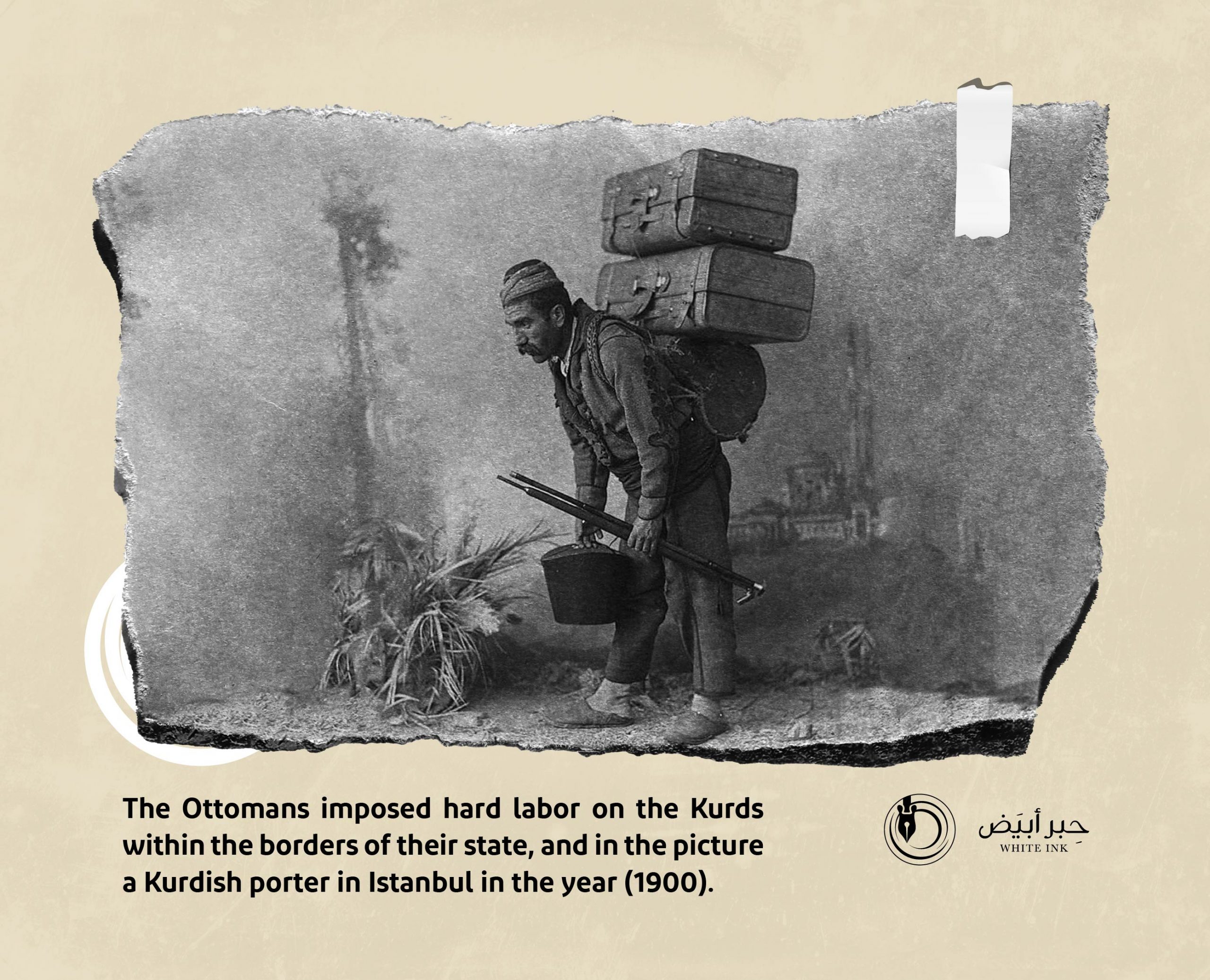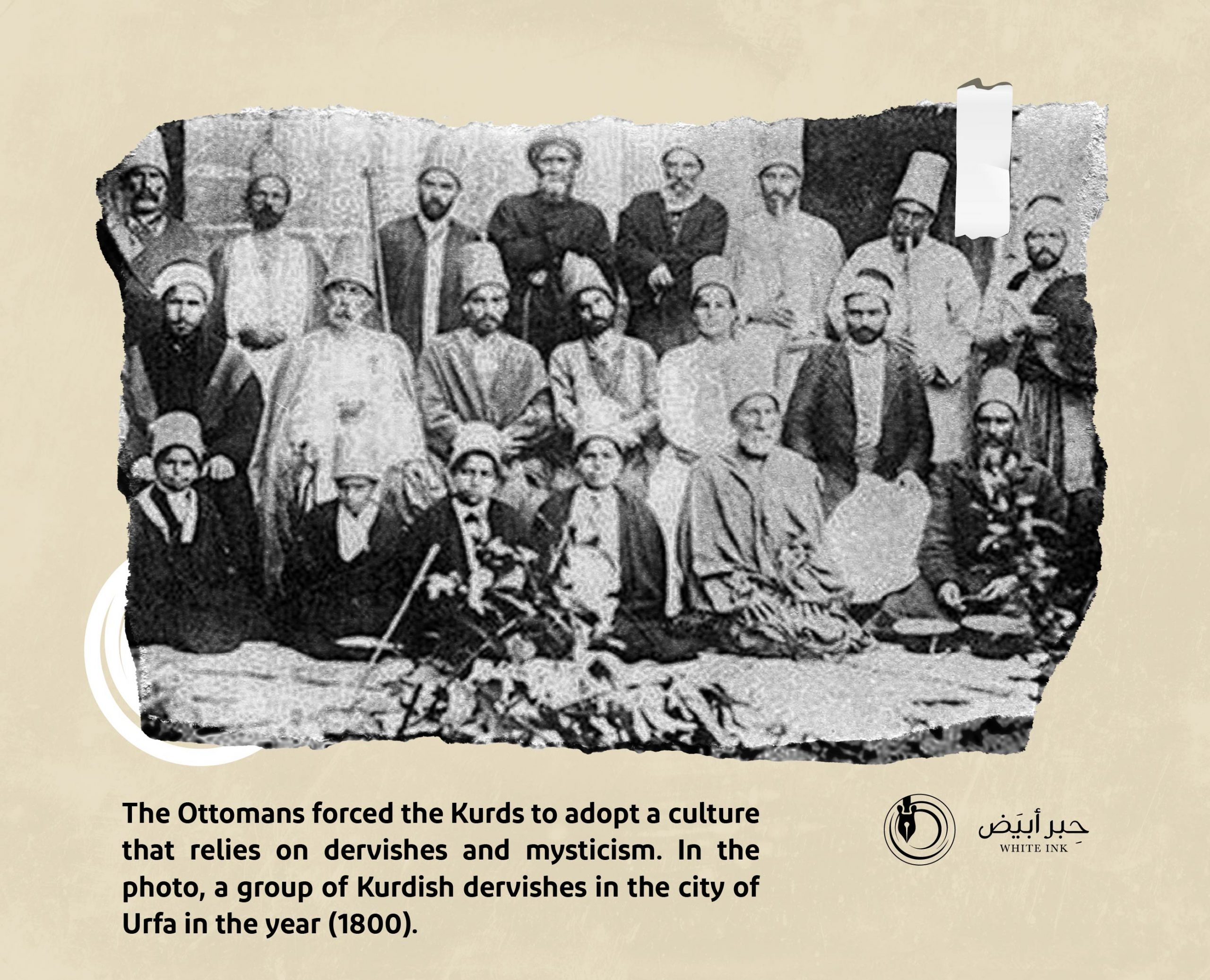
The Ottomans and the Safavids
Carried out massacres against the Kurdish people
Since the beginning of the Islamic conquest, the policy of stationing on the frontiers has been associated with the forces surrounding the Islamic world, with ideological and political slogans that brought together all the intellectual and religious currents that penetrated into the Islamic society, regardless of the different classes, societies, doctrines of people and their social positions. That background, which included peaceful goals, was exploited by those who came after the era of Prophet Muhammad, peace be upon him, and his honorable companions, to achieve impure goals under the cover of false legitimacy in order to unjustly possess the country and the people, given that they play public roles that contribute to the preservation of the Islamic nation.
Those goals were distorted by the Ottomans for the Muslims, and they deluded themselves and those around them that they had the right to own everything that bordered them thanks to their intellectual and political influence. They tried until they succeeded in controlling the social components to play roles that protect their fascist regime in front of civilians and also to convince the major European countries of their settlement projects with which they occupied Muslim countries for nearly five centuries.
As much as arousing fanaticism in favor of one race becomes, arrogance against other races is inevitable. In other words, it was the “political specificity” that the Ottoman Empire took to glorify the descendants of their sultans and sanctify their family that was authorized to lead the Islamic world and its surroundings, as they found themselves involved in a political path of emergence and preservation of the global hegemony of their state.
This is a long history of massacres committed by the Ottomans against some nationalities that were within their colonialism. Their massacres against the Kurdish race in the nineteenth century were not recent, as they are the most famous and closest to living memory, but they began since the beginning of the sixteenth century, and since then the exploitation of the Kurds by the Turks has become clear.
The Ottomans took advantage of their sectarian agreement with the Kurds to push them to confront the Safavids, and they made them a card to risk in their relationship with the Safavids. Selim I took various ways to impose his dominance on the Kurds, including starting the relationship and showing good intentions when he delegated the famous Kurdish leader Idris Al-Badlisi (Îdrîsê Bidlîsî) to unite the Kurds. He did not ask the Kurds for taxes because it was only the beginning of their ally and gave them the freedom to build their armies.
The love of revenge and blood for which Selim I was famous appeared after his victory over the Safavids. He deliberately killed a large number of Janissary soldiers for their refusal to participate in fighting the eastern outskirts of the Ottoman Empire, because its people were Sunnis (the Kurds). This happened when Selim I raided Kumash Castle and the Persian Emirate of Dhul-Qadir and ordered the killing of the military judge, Jaafar Chalabi, because he was one of the biggest opponents of the bloody participation in the fighting of those parties. After a series of Ottoman terror led by Selim I, he showed terror and apparent murder to large crowds of Kurds. This was with the aim of completely subjugating the Kurds to his authority and bringing their lands within the borders of his state, including Mardin, Urfa, Raqqa, Mosul and Diyarbakir, along with all Kurdish tribes without exception, provided that the rule remains for the chiefs of the tribes, and that obedience was nothing but coercion to spare themselves the evil of Selim I.
Selim I killed a large number of his soldiers when they refrained from carrying out massacres against the Kurds.

Kurdistan turned into a bloody battlefield between the Ottomans and the Safavids. In the year 1550 AD the Kurdish cities were subjected to complete destruction as a result of the bitter conflict between two rival forces, while the truth was that each of them was seizing a part of the inhabited lands by the Kurds.
During the period (1514-1566 AD) until the end of Sultan Suleiman I’s life (Turkish: Kanunî Sultan Süleyman), the Kurds were subjected to partial punishments that some of their princes received. The Kurdish-Turkish Comprehensive Agreement at Chaldiran had a great resonance during the years of his rule. The violation of the agreement was among his actions when he dismissed a Kurdish prince and appointed another who was not one of his heirs, in Bitlis (Kurdish: Bidlîsê).
After one year following the reign of Murad III (1574 AD), the Kurdish lands turned into a continuous target for the Safavid raids year after year, especially during the armistice between the Safavids and the Ottomans. During that, public life declined in all its aspects in the Kurdish lands, including the halt in reconstruction as a result of successive campaigns, and the killing of a large number of Kurds in each campaign in historical massacres that many historians overlooked.
The Ottomans ignored the invasion of the Kurdish lands by the Safavids and abandoned the responsibility they claim to defend Kurdistan against the Safavids. During the Safavid attacks, the soldiers of the Ottoman Empire would disappear and appear only when the Ottoman Sultan decided to take revenge on the Kurds by sending his battalions for the purpose of discipline and deterring the rebels only.
In a hard time, the Ottomans neglected the Kurds, leaving them to fell prey to the Safavids.

The Kurds were subjected to a large number of massacres carried out by the Safavid state against them, including what happened in the Damdem Castle and the massacres of Al-Barrad and Sten. The first occurred during the reign of the Ottoman Sultan Ahmed I, when the Kurds pleaded for help but to no avail, and the situation was repeated in the first Damdem massacre, then the second Damdem massacre. In 1618, the Ottomans and Safavids entered into a reciprocal deal over the Kurds, whose being Sunnis supposedly guaranteed them an advantage with the Ottomans. Muhammad Amin Zaki comments in the “Summary of the History of the Kurds and Kurdistan” on this by saying: “Finally, in December 1618 AD, peace and agreement were concluded for the second time between the two states. While writing the peace memoranda, Shah Abbas deliberately transferred 15,000 Kurdish families and evacuated them to the country of Khorasan to be used against the Turkmen and prevented them from dominating the Iranian borders in the North East”. This section of Iran (Khorasan) is on the borders of Turkmenistan and Kyrgyzstan and is heavily inhabited by Kurds to this day.
The Kurdish princes and their people paid the price of freedom in their attempts to confront an army that was superior to them in equipment, in addition to the fact that the fictitious Kurdish-Turkish agreement had bad effects. With this agreement, the Ottoman Empire strictly restricted the growth of any central Kurdish principality to prevent them from forming an independent army to defend themselves or working to establish the administration for the facilities of their emirates that were ostensibly granted to them. As a result, the borders of the semi-autonomous Kurdish emirates remained limited in their capabilities and were not united under any entity other than the Ottoman empire, while taxes were burdening the princes and the citizens even without having the right to mitigate rather than to refuse.


- Hayat Munawer Al-Rashidi, American Missionaries in the Ottoman Empire, (Cairo: Dar Al-Raya Publishing, 2015).
- Abdul Hamid II, My Political Memoirs, 2nd Edition (Beirut: Al-Resala Foundation, 1979).
- Muhammad Husayn Khalaf Tabrizi, Persian Farhank, Definite Proof (Tehran: Nima Publishing, 1379 AH).
- Muhammad Farid Bey, History of the Ottoman Supreme State, edited and verified by: Ihsan Haqqi (Beirut: Dar Al-Nafaes, 1983).
- Muhammad Mukhtar Pasha, Kitāb al-tawfīqāt al-ilhāmīyah fī muqāranat al-tawārīkh al-Hijrīyah (Cairo: The Arab Foundation for Studies and Publishing, 1980).
- Abdulaziz Al-Shennawi, The Ottoman Empire (Cairo: The Anglo Egyptian Bookshop, 1986 AD).
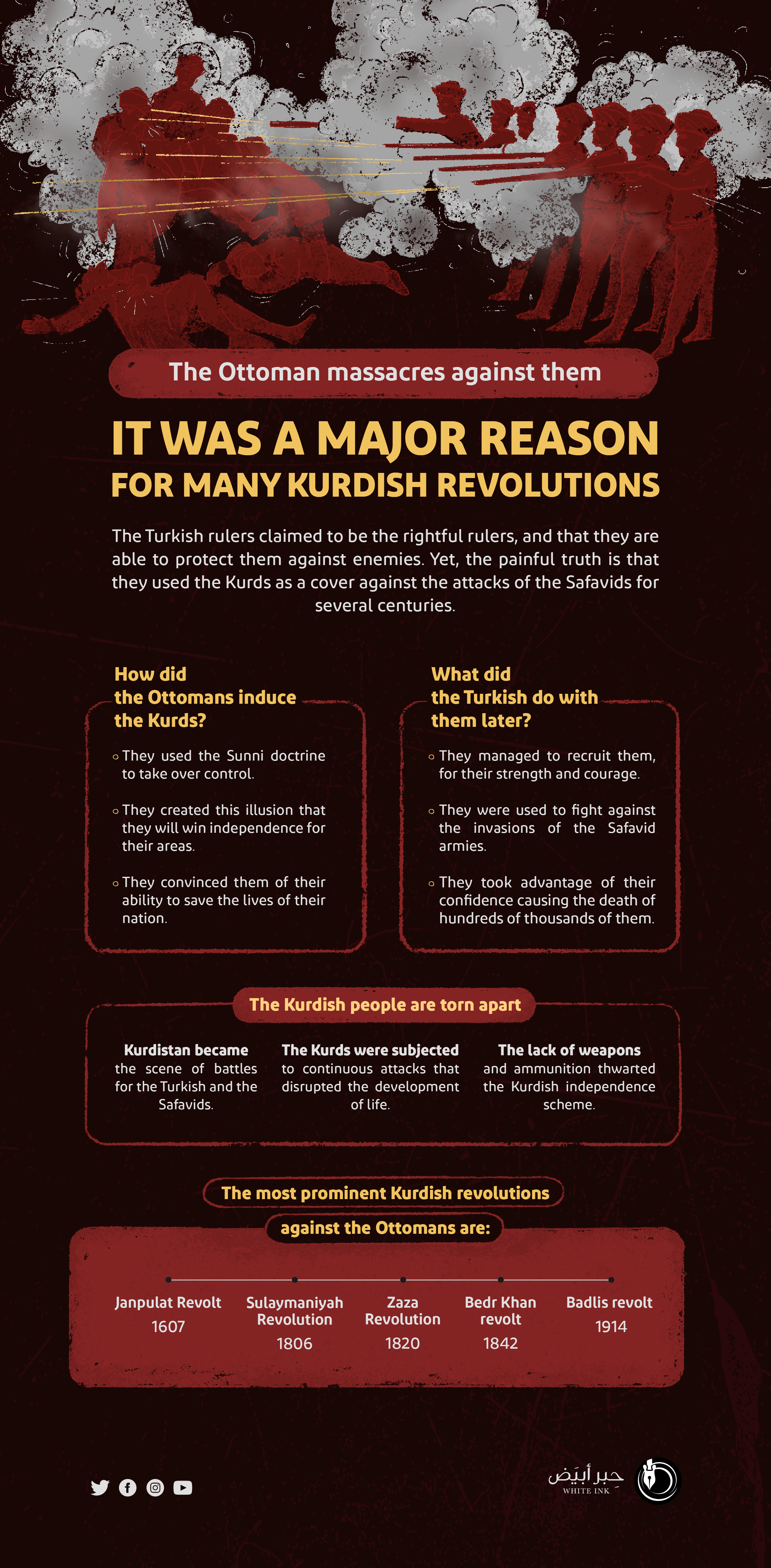

The Ottomans worked to impose the "end of history" on the Kurds
The Kurdish rebellions against the Turks were started by Ibn Jumblatt and ended by Bedr Khan Pasha
There were many dramatic chapters in the long Kurdish struggle against the Turkish oppression, as the Turks dealt with the Natives in many of the areas they occupied with blood, while the Kurds were taken by the Ottomans and they were stripped of their lands and rights; the Ottomans wanted to obliterate their history and identity, to make the Kurdish people without a history in order to build a new history over that of the Kurds, starting with the entry of the Ottoman colonialism into the Kurdish regions, in accordance with the theory of the “end of history.”
The Kurdish issue took on a direct political turn after the Battle of Chaldiran in (1514 AD), when the Ottomans and the Safavids shared the Kurdish lands without any regard for the sacrifices made by the Kurds in order to consolidate the Ottoman Empire. This new reality created a backlash among the Kurds, which was manifested in their dependence on their own tools, away from relying on the political or humanitarian gesture from the Ottomans, who were using the Kurds as firewood in their expansionist wars, and also in imposing internal security to subjugate the rest of the ethnic communities.
The Kurdish resistance to the Turkish invasion is considered one of the obvious facts under the barbarism that identified how the Turks dealt with the Kurds and the rest of the areas they entered; as Narrations tell dramatic chapters of the bloody events in which the Ottoman Empire was involved.
Muhammed Amin Zaki says in his book “Summary of the history of the Kurds and Kurdistan from the earliest historical times so far”: “In 1037 AD, the hordes of the invaders (the vanguards of the Seljuks) reached the gates of Maragha, and they plundered the city, killed the people and carried on the killing, then they raided the Kurdish Hadbaniya clan, killing a great deal of them… A group of invaders had arrived in Armenia in their raid and inflicted great massacres and total destruction there.”
Although the Kurds after the battle of Chaldiran were able to obtain their autonomy away from Astana with the survival of some simple manifestations of Ottoman sovereignty, including coining money, praying for the sultan and joining the Ottoman armies if they were asked to do so, but they refused to fight their wars; therefore, The Ottoman sultans decided to take revenge, through military strikes, claimed tens of thousands of Kurds. All this just a small part of the dark history of Ottoman rule.
The Kurds refused to fight for the Ottomans, so the Ottomans took revenge on them by deterring and striking them militarily.

In the early years of the seventeenth century, specifically in (1607 AD), the revolution of Ali bin Jumblatt broke out in the city of Aleppo, against the backdrop of the assassination of the Ottoman Grand Vizier of his brother, Prince Hassan, after which the revolutionaries marched to Tripoli of the Levant and other regions, and managed for a short period of time to rule the country independently. Then Ibn Jumblatt concluded a treaty with Archduke Ferdinand, King of the Tuscany government.
As the Ottoman Sultan rise to this challenge, he assigned the famous Grand Vizier Kuyucu Murad Pasha to put down Ibn Jumblatt’s revolt; the two groups met in the Urj plain on October 24, 1607 AD, and bloody battles were fought that wiped out half of Ibn Jumblatt’s army, which forced him to retreat and withdraw. As a result of this defeat, Ibn Jumblatt went to Astana, where Sultan Ahmet I pardoned him and appointed him to Beylerbeylik for the Eyalet of Tameshwar. However, this pardon was not welcomed by the Grand Vizier, Murad Pasha, the butcher, who sent someone to kill him in the Belgrade fortress while he was on his way to work.
In (1806 AD), a great revolution broke out in the Sulaymaniyah region led by the Kurdish leader Abd al-Rahman Pasha al-Babani, during which the Kurds were able to achieve important tactical accomplishments, but they were not sufficient to achieve the supreme political goal of independence from the Ottomans. Regarding this revolution, we find the journalist and writer Ahmed Taj al-Din in his book ” Kurdish history of the people and the cause of the homeland ” says: “… the clashes continued for two years, during which the Kurds managed to achieve great triumphs, but the revolution ended with the death of its leader in one of the battles, and there was no one to lead after him; therefore, the revolution was extinguished in the bud and in early years.”
In (1812 AD) another revolution also broke out in Sulaymaniyah, this time under the leadership of Ahmed Pasha al-Babani and was able to achieve extraordinary results, which prompted the revolutionaries to attempt marching towards Baghdad to seize it, a goal that was almost achieved, had it not been for the death of the leader of the revolution, to end up like the one before.
About 8 years later, in (1820 AD), the Kurds revolted fiercely in the Zaza region to extend to the rest of the Kurdish regions and lasted for a few months before it came to nothing; due to the lack of supplies and armament, which prompted the revolutionaries to barricade themselves in the mountains before the Turks managed to besiege them and exterminated them till every last one of them; thus, the Zaza revolution shall be part of the list of crimes committed by the Ottomans against the Natives. After a decade, the Kurds revolted in the Sinjar region in (1830 AD), and it faced the same fate, given the same introductions that preceded the spark of the revolution.
In analyzing of one of the most important Kurdish revolutions that was relatively distinguished from the other revolutions by the presence of a revolutionary leader, as well as the self-presence, represented in the awareness of the liberation tasks; therefore, based on the foregoing, that the leaders of the Kurdish clans and heads of tribes adopted – compelled to – the revolutionary choice of liberation; being one of the legitimate violent approaches to achieving the Kurds’ national dream of independence, through controlling the Kurdish areas. It seems that the absence of a central organization that represents the liberation vanguard, and a true leader who possesses monitoring and control means, in military sense, between tribes and clans, all of this contributed to the failure of these attempts; in the end, the level of aspirations from independence to autonomy decreased.
In (1812 AD), in the age of eighteen years old, Prince Bedr Khan Pasha assumed the rule of the island of Bhutan. Despite his young age, he was a brilliant, resolute and strategic leader. He defined his main political goals and summarized them in two main points: confronting the intrigues of the Topkapı Palace and working on the unity of the Kurdish tribes and clans under one banner. To achieve these goals, Bedr Khan Pasha analyzed the previous revolutions and identified the causes of the defeats of the Kurds against the Ottoman invaders, to identify the most important direct and indirect causes of these war setbacks.
Historian Ballh Shyrkwh summarizes these reasons in his book ” Kurdish issue past the Kurds and their present ” in two main points: lack of unity of Kurdish forces in the revolutions around the ultimate goal of unity, lack of weapons and ammunition factories and dependence on foreign support.
The successive losses of the Kurds before the Ottomans for their dispersion and the lack of weapons and ammunition.

Marching from the command center in Bhutan, which was practically independent of the Ottoman Empire, Bedr Khan headed out to unify the Kurdish tribes under one banner, which he succeeded in resoundingly, as most of the Kurdish symbols joined under his banner, including Mustafa Bey, Darwish Bey and Mahmoud Bey, in addition to the leader of Hakkari Noor Allah Bey and the leader of Khaizan Khaled Bey and Sharif Bey, one of the leaders of the Moshe Brigade and others. Bedr Khan also worked to achieve military self-sufficiency in ammunition and equipment by establishing an ammunition and rifle factory in the city of “Al-Jazirah”.
Despite the spectacular successes achieved by the Kurds against the Ottomans, some tactical errors and failure to consider the regional aspects, in addition to internal betrayals and intrigues of the Topkapı Palace, were all factors that precipitated the failure of the Kurds’ dream of establishing an independent homeland , as the injunctive measures that Bedr Khan led against the Christian Nestorians who refused to pay taxes were a strategic mistake exploited by the Ottoman Sultan to get the green light from the Europeans to put down the Kurdish revolution once and for all, to perpetuate their political problem and their existential cause forever.


- Muhammed Amin Zaki, Summary of the history of the Kurds and Kurdistan from the earliest historical times so far, translated by: Muhammed Ali Awni, 2nd Edition (Baghdad: The General House of Cultural Affairs, 2005).
- Ahmed Taj El-Din, Kurdish history of the people and the cause of the homeland, (Cairo: Cultural House for Publishing, 2001).
- Ballh Shyrkwh, Kurdish issue past the Kurds and their present, (Cairo: El-Saada Press, 1930).

A history of hostility and bloodshed
The most famous Kurdish Emirates which fought back the Ottoman occupation
The history of the Kurds under the Ottoman Empire is full of tragedies, as a result, the Turkish Republic carry the burden of this history, while the Kurds did not forget its tragic facts.
The most tragedy suffered by the Kurds; is that they felt that their lands were merely the frontier principalities between the Ottoman and Safavid fighting over their lands, and they were fuel for them. The Kurdish lands became a transit area and a meeting point between the armies of the Safavids and the Ottomans, and how many times Kurdistan was the scene of many battles between them, during which Kurdistan incurred heavy losses on the human and economic levels.
Kurdistan took economical and human strikes; given its geographical condition and being surrounded by two tyrannical forces.

As time passes and as conditions change, the Ottoman sultans did not respect the state of autonomy of the Kurdish Emirates. The clash between the Ottomans and the Kurds began in the era of Murad IV. The Ottoman armies violated the special condition of these emirates. We can see a lot of conflicting views on this matter between Kurdish and Ottoman sources; The Kurdish sources viewed this as a massacre to the Kurds, while the Ottoman sources described it as punitive campaigns for the Kurdish princes, and a subjugation of all the states to the authority of the central state. Things get worse in the nineteenth century as the Ottoman state grows weaker, and its economic crises, defeats in foreign wars, and the fall of some of its states into the hands of its enemies. Hence, the Ottoman Empire abandons the policy of decentralization that the Ottoman administration was recognized therewith, for long periods, and the state adopts a policy of centralization, which means direct confrontation with its subjects. In addition, this century was considered the era of nationalities, hence the great clash between Turkish nationalism and Kurdish nationalism, such as the clash between Turkish nationalism and other Armenian, Arab and, before them, Greek nationalities.
Some studies conducted on the documents of the Ottoman archives indicates to the complaints of the Kurds about the abuses of the Ottoman administration, especially that the Kurds initially maintained their loyalty to the Ottoman Sultan, for fear of falling into the hands of the Safavids.
In his study about the Kurds and Kurdish clans in the Ottoman archives, Muhammed Ali Ahmed observes the complaints of the people of Suruj district regarding the behaviors of the Ottoman army, as he presents a document dating back to (1845) explaining that the Ottoman army took a decision to discipline the people of Suruj for refusing to send men to participate in the Ottoman campaign on the Arabistan region.
The author also exhibits another document dating back to (1898) that narates the armed rebellion carried out by the people of Suruj and its surroundings against the soldier detachment. The author also monitors the forced displacement of Kurdish clans, which began in the last quarter of the eighteenth century and continued in the nineteenth century. These operations include the displacement of Kurdish clans from their areas of residence in northeastern Syria and present-day southeastern Turkey to the exile specified by the Topkapı Palace. The author exhibits a document explaining the displacement of the Kurds from the Marash area to the Raqqa area and its environs.
Not only were the displacements of the Kurds, but the clash between the Ottomans and the Kurds over the fall of the Kurdish Emirates, which had a kind of autonomy; we will present some examples of the fall of these Emirates.
Emirate of Soran:
Some interpret the name Soran as referring to the name of one of the main Kurdish Dialects, called the Sorani dialect. The Emirate of Soran was one of the most important Kurdish Emirates; It included Mosul, Kirkuk and Erbil. These emirates were reportedly characterized by tolerance and openness to the point where they allowed women to lead.
As stated before, the Ottomans abandoned the policy of decentralization and adopted the policy of centralization, as a result, the Ottoman army marched to the Emirate of Soran, where it launched a fierce attack. The Ottoman propaganda focused on religion, especially since the majority of the emirate’s residents are Sunnis. The Ottomans won over some Kurdish scholars to their side, and these scholars issued a fatwa to the Kurdish people prohibiting fighting the Sultan’s army, because it is the army of the Caliph. That this fatwa arguably played an important role in the defeat and fall of the Emirate.
Emirate of Bhutan:
The Emirate of Bhutan is one of the most important emirates, this emirate is located in the region of the island of Bhutan in southeastern Anatolia, and most of its residents are Sunni Muslims. In the Ottoman era – as we mentioned before – the Emirate of Bhutan became a hereditary, self-governing Emirate with subordination to the Topkapı Palace.
Qubat al-Jafi describes the Emirate of Bhutan as the jewel of the Kurdish Emirates. The Emirate of Bhutan is characterized by its long history. It was the last Kurdish Emirate to fall into the hands of the Ottomans. Some even compared it to the Emirate of Granada, being the last emirate to fall into the hands of the Spaniards in Andalusia.
The Emirate of Bhutan aspired to repeat the Khedive experience in Egypt.

Sources narrate the story of one of the most important princes of Bhutan, Prince Bedr Khan Pasha, this reformist prince who was extremely impressed with the experience of Muhammed Ali in Egypt, and wanted to emulate him and carry out major reforms in the Emirate of Bhutan. Bedr Khan also worked on developing a Kurdish political project for the future of the Emirate, but his project conflicted with the policy of Ottoman centralism. Nevertheless, Bedr Khan continued his reform project, following the example of Muhammed Ali; where he was keen to build a strong army, and established an ammunition factory in Bhutan. He was also interested in encouraging education in the Emirate, and even sent students to Europe.
The anticipated clash occurred between him and the Ottoman Sultan, when he refused to participate in the Sultan’s foreign wars. As a result, the incident occurred between him and the Sultan’s army, and he could not resist any longer, so he was finally forced to surrender.
At first, Amir Bedr Khan was sent as a captive to Istanbul; there, the Sultan exiled him and his family to the island of Cyprus. The Bedr Khan family dispersed in many countries, some of them arrived in Egypt and among their descendants is one of the most famous Egyptian directors, “Ahmed Bedr Khan”, and also his son, “Ali Bedr Khan”.
The Ottoman Empire slandered the Kurdish Emirates, and caused a history of conflict between the policy of decentralization and the policy of centralization; this centralization policy failed to preserve the Ottoman Empire, but rather contributed to the struggle of nationalities in the Ottoman Empire.


- Issa Ibrahim Qasim: The Miran in the Emirate of Bhutan, a historical study.
- Qubat Sheikh Nawaf Al Jafi: Emirate of Butan.
- Muhammed Zaki al-Barwari: The Kurds and the Ottoman Empire.
- Muhammed Ali Ahmed: The Kurds and the Kurdish Clans in the Ottoman Archives.


